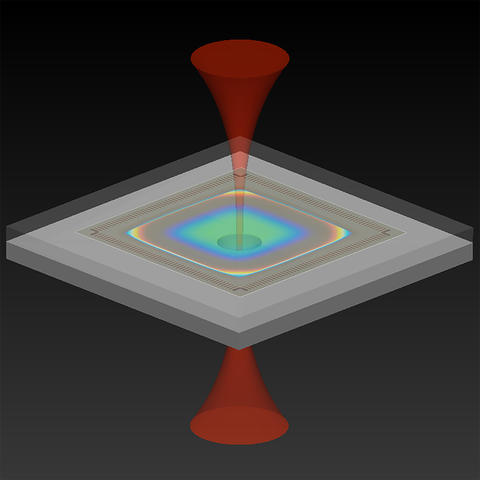
F. Zhou/NIST
GAITHERSBURG, Md. - The U.S. Department of Commerce (DOC) has released its "Annual Report on Technology Transfer: Approach and Plans, Fiscal Year 2021 Activities and Achievements." The report details technology transfer activities at the National Institute of Standards and Technology (NIST), the National Oceanic and Atmospheric Administration (NOAA), and the National Telecommunications and Information Administration's (NTIA) Institute for Telecommunication Sciences (ITS).
"Technology transfer is a critical component of the DOC mission to create conditions for economic growth and opportunities for all communities," said NIST's Associate Director of Innovation and Industry Services Mojdeh Bahar. "By transferring technologies to the commercial market, the DOC laboratories help drive U.S. economic competitiveness, strengthen domestic industry and spur job creation."
The report highlights successes from each laboratory. For example, NIST developed an accelerometer to better measure changes in velocity in smaller navigation devices. At just one millimeter thick, the device uses laser light instead of mechanical strain to produce a signal. It could improve inertial navigation in systems such as military aircraft, satellites and submarines, especially when a GPS signal is not available. NIST has also engaged in a collaborative effort with the National Institute for Innovation in Manufacturing Biopharmaceuticals (NIIMBL) and United States Pharmacopeia to assess analytical methods and develop standards for adeno-associated viruses, which are a critical component in delivering gene therapies. NIIMBL is a DOC-sponsored Manufacturing USA institute.
NOAA Open Data Dissemination (NODD) provides datasets via U.S. cloud service provider platforms to offer improved, free access to NOAA's environmental data. NODD provides near real-time data to support user operations and feeds artificial intelligence and machine learning application development; these capabilities allowed for the creation of a new early warning service for natural disasters and other high-impact events from a California-based startup company. Another NOAA project resulted in a patented lionfish trap that could help curb the ecological, cultural and commercial damage caused by invasive lionfish in waters too deep for spearfishing. The trap causes minimal damage to the ocean floor and is relatively simple to construct, deploy and retrieve.
NTIA ITS continued conducting critical R&D and testing of the Citizens Broadband Radio Service (CBRS), which allows for shared federal and nonfederal use of the 3.5 GHz band of radio frequency spectrum. ITS worked with the Federal Communications Commission and others to improve spectrum management and access certification. NTIA ITS also manages the Table Mountain Radio Receiving Zone of the Research Laboratories of the DOC, which supports multiple collaborative research and engineering studies. The zone's Advanced Communications Test Site was used in FY 2021 to support research into radio frequency interference monitoring, lidar technologies under various atmospheric conditions, and autonomous sensing and communications technologies for uncrewed vehicles.
The full FY21 report can be found here.






